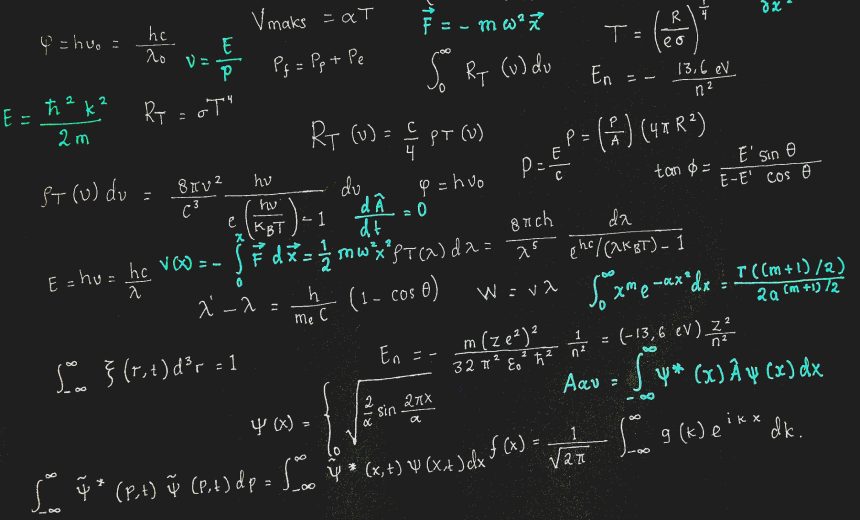Encryption & Key Management
,
Security Operations
Securing the World for the Age of Quantum-Resistant Cryptography

Advancements in quantum computing are poised to reshape technology and the implications reach far beyond hardware. This powerful computing capability will require more advanced cryptography to secure systems and sensitive data. The transition to quantum-safe security is fundamentally a mathematical shift, rooted in problem hardness, structural design and the ability to evaluate proofs with confidence. Mathematicians already understand the abstractions and analytical habits that this work requires.
See Also: Going Beyond the Copilot Pilot – A CISO’s Perspective
Cybersecurity needs thinkers who can examine the logic underlying our systems, question assumptions and identify where traditional cryptography will no longer be viable. The post-quantum challenge presents an opportunity for math-minded people to contribute in ways that will influence global security for the foreseeable future.
Understanding the Quantum Threat Through Mathematics
Quantum computers operate differently from classical machines because of superposition and interference, which allow them to evaluate certain solution spaces in ways that traditional systems cannot. The difference is not merely more computing power. A classical computer works like a very fast detective who checks one clue at a time, narrowing the possibilities step-by-step.
A quantum computer works more like a team of detectives exploring many paths at once, comparing and canceling possibilities until only the correct pattern remains. Algorithms such as Shor’s exploit this structure, allowing quantum machines to factor large integers and compute discrete logarithms far more efficiently. These capabilities undermine the hardness assumptions behind RSA, Diffie-Hellman and elliptic-curve cryptography. The shift becomes easier to grasp when viewed as a fundamentally different method of problem solving, not simply a faster processor.
What Quantum-Safe Cryptography Really Means
Developing quantum-resistant cryptography requires building algorithms with difficulty that doesn’t collapse under this new approach to computing. Classical algorithms stay secure because it takes traditional machines an impractically long time to test every possibility. Quantum systems do not test everything faster. They use a different strategy entirely. If classical security is like locking a safe with a combination that would take centuries to brute-force one number at a time, quantum computing is like having the ability to evaluate many combinations simultaneously by exploiting patterns in how the safe is built.
Quantum-safe algorithms rely on mathematical problems that do not exhibit those patterns or shortcuts, even under quantum techniques. This is why lattice-based constructions, multivariate equations and hash-based signatures are leading candidates. The best-known quantum approaches still cannot dissolve their underlying complexity.
Why Math Minds Are Central to the Post-Quantum Transition
The field needs mathematicians who can examine the structural integrity of quantum-safe algorithms, identify weaknesses and reason carefully about hardness assumptions. Many of the new protocols rely on high-dimensional lattices, error-correcting codes or algebraic structures that demand confidence with abstraction and proof.
Even security engineers implementing these algorithms need people who understand the mathematical properties that make them secure. This is not simply an engineering shift. It is a conceptual shift that depends on thousands of hours of human mathematical judgment. AI can assist with exploration and experimentation, but it can’t independently validate the mathematical foundations or verify the proofs that underlie quantum-resistant systems. The work requires human reasoning, peer review and a strong understanding of the structures that define modern cryptography.
How Math Thinkers Can Build a Career in Cybersecurity
This moment presents an opening for those who love mathematics and want a meaningful career path in cybersecurity. Cryptanalysis and protocol design are natural fits for people who enjoy working with proofs, complexity and structural reasoning. Security architecture offers opportunities to apply mathematical thinking to algorithm selection, system design and long-term migration planning.
Analysts working in threat detection increasingly rely on statistical modeling, anomaly detection and machine learning techniques that benefit from quantitative depth. Even risk teams need mathematicians who can model expected loss, quantify uncertainty and evaluate the long-term implications of the quantum transition. Each of these paths welcomes professionals who can reason analytically and communicate those insights clearly.
The Broader Landscape You Can Help Shape
The industry is embarking on a multiyear process of replacing cryptographic primitives, updating protocols and validating implementations. This will require professionals who understand the mathematics behind each choice, who can identify where vulnerabilities may arise and who can help build durable structures that withstand future advances.
Mathematics becomes a practical tool in this transition, not an academic exercise. The ability to evaluate complexity assumptions, inspect the logic of an algorithm, or question the stability of a proposed design can determine the strength of an entire security architecture. These contributions have real impact and will be in demand for many years.
A Quantum-Safe Future Shaped by Human Insight
Quantum computing introduces challenges that cannot be solved through automation alone. AI will support the work, but the future of cryptography depends on the human capacity to analyze, question and innovate.
The next generation of security will be shaped by people who understand mathematical structure at a deep level and who can translate that understanding into practical design choices. You don’t need to be a cryptographer today to contribute meaningfully tomorrow. You only need curiosity, rigor and the willingness to learn how your mathematical strengths fit into a field that is actively reinventing itself.
Cybersecurity needs thinkers who are ready to help build the foundations of the quantum-safe era, and you may find that your background prepares you for this work more than you realize.
